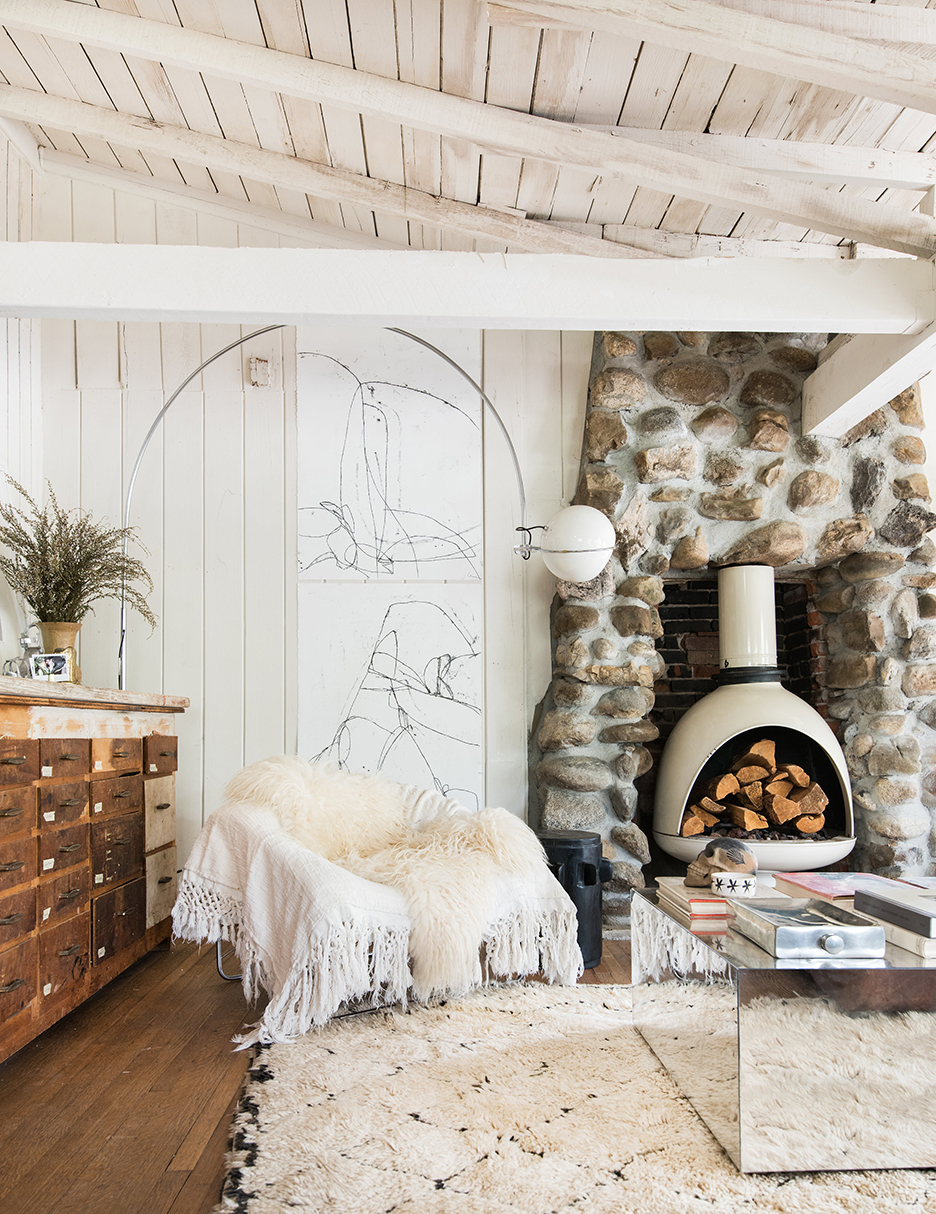We may earn revenue from the products available on this page and participate in affiliate programs.
For hands-on advice from designers and pro DIYers, plus more scrappy before-and-after transformations, subscribe to Reno. Let your in-box do all the hard work—for now.
A lot of times, especially in old cottages, plain drywall is not the answer. I’m a big proponent of textured ceilings, and I’m happy to live a little bit “rougher” to have them. Rafters (a traditional means of framing a roof) are an extra layer that makes a huge difference: They add warmth. Over the years, my brother, Steve Ford, and I have tried many techniques to expose rafters while also insulating a space. After all, that’s key to any home, especially in Pennsylvania, where the temperatures drop in the fall and winter. We’ve come to swear by three solutions for keeping that cottagey look without compromising function, and each one works for different reasons.
First thing’s first: Do your homework. “When you’re opening the ceiling, you need to check two things—local building code on insulation requirements and proper airflow for the roof,” says Steve. Then you can follow the route that works best for your home and lifestyle. Here are three ways to go about it, from the least invasive to the most.
Buffer the Roof

So you’ve exposed the rafters inside your home but you still need some insulation. Consider cushioning the roof rather than the interior walls. You can get away with this in places like California, where the weather is generally warmer (we pulled off this inside-out trick at my old Echo Park cottage).
Drywall as Normal, Then Fake It

The house we renovated for HGTV’s Rock the Block project was a new build with a very plain ceiling, so we followed the path of least resistance. “We opened it up, added a nailer board to the joist, and put insulation in between,” explains Steve. Once it was closed back up, we attached decorative, 1-by-6 low-grade pinewood boards (swathed in a thin coat of white paint) to the ceiling, leaving 2 feet of space in between each. These faux joists gave the room so much more dimension, but there’s still standard insulation between the two levels so you don’t hear footsteps upstairs. Bonus: There’s no demo involved.
Get Your Patchwork On
Insulation was a must-have at my old Pennsylvania schoolhouse to help keep it warm, but what we did was cover those areas with thin boards to make up for some of the texture we lost by not fully exposing the rafters. It’s very labor-intensive, but you get the feeling. “You’ll be glad you faked the exposed rafters come wintertime,” says Steve.

Similarly, if you are working with a tight attic space and can’t show off any of the architectural features because you need to insulate everything, beadboard is a great solution. For a matte, raw feel, I cover everything with Kilz primer (nothing else), but if I want the wood to shine, I’ll do one layer of PPG’s Pure White so the grain still shows through. Exposed rafters might not be for everyone, but the biggest thing is that you commit to what’s valuable to you.
Our Winter Renovation issue is here! Subscribe now to step inside Leanne Ford’s latest project—her own historic Pennsylvania home. Plus discover our new rules of reno.


